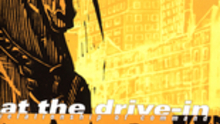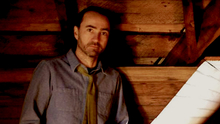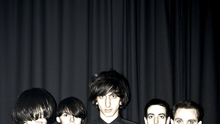First-person shooters are first-class success stories in contemporary gaming. Of the top-three selling titles of 2011, two were FPS in nature – Call of Duty: Modern Warfare 3 and Battlefield 3 – and riding high in Amazon’s 2012-sales-so-far chart (including pre-orders) are Black Ops II and Borderlands 2: both played from the first-person perspective; all containing more than their fair share of guns-blazing gameplay.
And nestled amongst Amazon’s top-sellers of 2012 is another FPS of no little note. Halo 4 is the proper follow-up to Bungie’s trilogy-concluding third Halo of 2007, an Xbox 360 exclusive that has surely been responsible for a decent chunk of the console’s 70 million total sales. Halo 3 refined many of the elements that made the previous two Halo games such hits for the original Xbox, perhaps most pertinently the essential multiplayer modes. Over a million people played Halo 3 online, in multiplayer, during its first 24 hours on release. Although its solo campaign had appeal, the longevity of Halo 3 was in its suite of co-operative/multiplayer options.
Halo 4 might not be a Bungie production – development has switched to 343 Industries, established by Microsoft in 2007 exclusively to oversee the Halo franchise (its name is taken from a series-starring AI, no less). But anyone looking for disharmony in the transition from studio to studio will be disappointed: Halo 4 is probably the most complete, most compelling entry yet in the ongoing saga, and it also represents the beginning of another trilogy, the Reclaimer Trilogy. Why that name? Play the game’s campaign and it soon becomes clear.
But how did this breed of game become so massively popular – and, indeed, vital to the ongoing commercial successes of the associated platforms? It’s easy to glance back so far as id Software’s early 90s hits Wolfenstein 3D and Doom as progenitors; but the roots of the FPS go further back than that.
But first, some news.
 Skyrim... presumably nobody voting this year played it on a PS3, then?
Skyrim... presumably nobody voting this year played it on a PS3, then?
Some News
First, Friday October 26 saw the 30th annual Golden Joystick Awards play out at a fancy hotel just south of the Thames. I was in attendance, and a most splendid time was had participating in a who’ll-win-what-category sweepstake with a work colleague and voice-of-PlayStation-Access and jolly comedy sort Lucy Porter. As it happens said colleague won, choosing Skyrim as his game of the year pick before anyone else had a chance to call it. Bravo him on his £2 win… of which I still owe him a quid.
As the longest-running awards bash for the gaming industry, with some four million votes counted, the Golden Joysticks act as a fine barometer for the state of gaming right now. With fans having their say over developers and journalists, some might argue that triple-A titles with hefty marketing budgets dominate proceedings; but cast an eye over the winners this year and it’s pretty clear that some great games have been honoured.
The full list of winners can be found on CVG’s website (and several others, too). Among the highlights: Batman: Arkham City (rightly) won Best Action; best shooter went to Battlefield 3; Minecraft on XBLA was triumphant in the best downloadable category; and, as noted just above, Skyrim was named Ultimate Game of the Year.
Secondly, I’ve recently been working on a documentary series for BBC Radio 1, on video gaming. Which has been pretty amazing. The series, their Gaming Season, began on Monday November 5 with Dev telling the story of blockbuster gaming (one I actually didn’t have a hand in) – listen to it here. Amongst the games featured are Grand Theft Auto, Mass Effect, BioShock and something called Halo 4, actually.
On November 19 (at 9pm), the series looks at the incredible influence of video game music on today’s artists, with contributions from Ikonika, Horse the Band and Chipzel (her behind the awesome sounds of Super Hexagon – check it). And then, on November 26 (again, 9pm), focus switches to mobile gaming, with interviews with major players in that market like Rovio, Telltale and Imangi, chats with Retro Gamer and Edge journalists, and mobile gaming favourites from Wiley, We Are The Ocean, One Direction and Justin Bieber.
Tune in, yeah?
This just in... The new trailer for Grand Theft Auto V goes live on November 14. Thought you might want to know.
 MIDI Maze/Faceball 2000... who knew smiley-faced balls could be so cutting edge?
MIDI Maze/Faceball 2000... who knew smiley-faced balls could be so cutting edge?
So, Where Were We…?
Oh yes. The DNA of the FPS. First-person shooters have a long history indeed – back in 1974, or thereabouts as exact dates have become rather muddled, Maze War appeared. Super simple, it pitted players against enemies in a maze, the outline of which was displayed but the positions of opponents was not. As well as its pioneering perspective, Maze War also permitted peer-to-peer play on two different machines, making it an essential cornerstone of multiplayer gaming as we know it today.
1987’s MIDI Maze for the Atari ST, later ported for the Game Boy, SNES and Game Gear as Faceball 2000, furthered the fundamentals of Maze War. “Kill a happy face,” read its cover art – and as avatars in the game were represented by Pac-Man-style smilers, that’s exactly what MIDI Maze allowed the player to do. Between Maze War and MIDI Maze came 3D Monster Maze, released in 1982 for the Sinclair ZX81. (Spotting a theme with the titles?) Although this pivotal Spectrum game didn’t pack guns and ammo into its gameplay, its innovative programming to display the first-person view pushed the hardware further than ever, and the tension of the game was palpable indeed.
As consoles and computers grew in power, so 3D-like first-person gaming became more viable. Two games I had for the Amiga were Corporation and RoboCop 3D, and fall into the FPS genre. The latter was terribly clunky, and not a particularly enjoyable experience – I’ve memories of getting wiped out by grenades, over and over. There was an awful driving bit, too – but it’s worth noting how many of today’s FPS games, Halo 4 included, mix standard grunt-with-a-gun sections with others where vehicles are used.
Corporation was something else though – unlike RoboCop 3D, the 1990 Amiga/ST release moved at a brisk pace, and the 3D environments, while inevitably bland, seemed real enough to a pre-teen gamer. The story… well, the story didn’t matter. What did was the slick gameplay, and the feeling that this was as close as a home computer could get to delivering the sort of environmental immersion that kids of the era could usually only see on Knightmare. The game’s Mega Drive port was horrible, but then, FPS games only began to make sense on consoles when the magical right analogue stick came into being.
Where Corporation led, id Software followed. 1992’s Wolfenstein 3D is the widely acknowledged forefather of today’s FPS titles. It used ray casting techniques to display its 3D worlds, within which sprite-based enemies lurked, ready to open fire on the player. Unlike Corporation, Wolfenstein 3D showed the player’s weapon on screen, a FPS staple ever since. The player’s health was represented by a face on the bottom-of-the-screen HUD, which gets more battered, bruised and bloody as punishment is received. This same layout was used in 1993 when id built on the success of Wolfenstein 3D with Doom: perhaps the most famous FPS of all time.
Controversial, inspirational, sensational: Doom was the complete FPS package in 1993. It went on to be ported from its shareware PC beginnings to platforms such as the Atari Jaguar, the Sega 32X (I have this… no, really), the Game Boy Advance and the Super Nintendo. It spawned a sequel in 1994, which was then followed by additional mission packs; a third proper Doom game came out for Windows, Mac and Xbox in 2004, and was recently re-released as a ‘BFG Edition’ for 360 and PS3.
Instantly playable, and near un-put-downable, Doom checked a number of vital boxes. Bloody, gory, fun? Check, check, and check. Great level designs, and a rewarding difficulty curve? Yep, and yep. Some satanic nonsense for a plot, spun into the sort of yarn that’d annoy a parent? Oh, sure. Multiplayer…? You betcha, and remotely, too, as one Doom player could face off against another over a modem. Such was Doom’s amazing influence than FPS games became referred to as ‘Doom clones’ in its immediate aftermath. It was adapted into an awful The Rock-starring movie in 2005, but please, don’t hold that against the genius that was… that remains the original Doom.
The history of the FPS is entirely connected to the progression of the hardware running said games – and as home consoles and computers became harder, faster and stronger, so FPS releases looked, sounded, and (mostly) played better and better. Post-Doom, key titles in the ongoing evolution of the FPS include: System Shock (1994), Duke Nukem 3D (1996), Quake (1996), GoldenEye 007 (1997), Half-Life (1998), Medal of Honor (1999) and Perfect Dark (2000).
Apologies for skimming over some pretty damn significant titles there, but doing so brings us to 2001, the Xbox and Halo: Combat Evolved. The launch title for Microsoft’s gigantic black box, Halo: CE introduced features that have remained present in the Halo franchise, both in terms of how the game looks and plays – there’s your motion tracker; here are your two guns; those jeeps there, you can ride in them – and its story. Developer Bungie had previous FPS experience with the Marathon trilogy, spanning 94-96, and carried over those games’ rich narrative traits, creating a deep sci-fi world for carnage to break loose into.
Perhaps knowing that there’s not a great deal one can do to make a faceless supersoldier into a character gamers can relate to, Bungie spun their story away from the central protagonist of Master Chief, inviting the audience to manifest an emotional attachment, instead, to those around him. So, we’re coerced into caring about the fate of Captain Keyes, and we’re there all the way as 343 Guilty Spark turns from foe to friend across the course of the original Halo trilogy. The enemy wasn’t entirely unlikeable, either: the Covenant sectioned itself into differing classes, which soon enough were at loggerheads with each other while their race battled both human forces and the galaxy-threatening Flood.
Still with me? Grand, as these themes, these previous happenings, directly influence proceedings in Halo 4. It’s not essential that you know the past three main games (not to mention the prequels Reach and ODST, and lots of related fiction), but doing so certainly lends the events of Halo 4 greater gravitas. Like the Mass Effect games, Halo 4’s scope is epic, with universe-in-peril prose popping up with no little regularity (this time, a buck-toothed Forerunner shapes up to be a significant thorn in humanity’s side). But, just as Mass Effect did a good job of focusing such immeasurably massive situations into tight, personal problems, leading the player to care for their squad over, say, the fate of a few million NPCs on a distant rock somewhere, Halo 4 takes the brave step of zooming right in on Master Chief and his malfunctioning AI, Cortana. This pair comprises the heart of Halo 4, their interactions at turns tender and dramatic.
Between the releases of 3 and 4, a multitude of FPS games have taken the genre in new, exciting directions. Sure, the likes of Battlefield 3 and Modern Warfare 3 are stunning things to watch, and can be addictive to play – but does nobody else find them a little… dry? Amongst the best FPS games for me between 2007 and 2012 are: BioShock and its sequel (2007, 2010), The Darkness (2007), Crysis and its sequel (2007, 2011), and Borderlands (2009).
These games might be linked by sci-fi/fantasy themes, but it’s not for this reason that they stand above the more realistic shooters for me. It’s about enjoyment, about playing a game that doesn’t always take itself too seriously. Sure, the situations the player guns/stealths through in Crysis 2 can be pretty heated; but such are the powers at one’s disposal, far removed from a simple handgun or clutch of grenades, that a feeling of empowerment propels the player onwards. These games are thrilling rides.
And Halo 4 delivers that: a rollercoaster of a campaign, complete with lurching twists, tremendous passages of high-speed action, and moments where you’re just waiting… and waiting… for a zenith of calm to be reached and the subsequent rapid descent to take your breath away. IGN’s 9.8 score for the game might leave the taste of sick in some mouths – but it’s easy to appreciate how their critic came to such a conclusion.
Simply, Halo 4 stuns – with how it moves; how it looks (incredible – few 360 games have pushed the machine this far); and how it sounds. This last aspect is worth taking a moment to appreciate. Guns are ace, enemy chatter unsettling, creepy squeals and cackles getting under the skin. Vehicles accelerate, crash and burn with suitably heavy metal crunches; and the music, by Neil Davidge, is tremendous throughout. Sometimes you slightly tune out of it, as it settles into an ambient drone, becoming embedded in the overall experience; and then, in it comes, peaking, perfectly accompanying the pinpoint accuracy of your jetpack-positioned headshot. It’s probably the best video game score since HEALTH’s work for Max Payne 3.
As great as Halo 4’s campaign is – and it’s very great – this game wouldn’t be as essential an entry in its series if it wasn’t for the multiplayer part of things. And 343 Industries hasn’t skimped on the options. The campaign can be played co-operatively, both through Xbox Live and on local split-screen. The UNSC Infinity, a spaceship featured heavily in the game’s plotline, lends its name to the multiplayer menu: from here, the forge option, available in 3, can be accessed to create/edit one’s own multiplayer maps.
War Games offers ‘training’ for the ship’s Spartan troops – which basically translates as your deathmatch set-up, featuring pre-play load-outs, enabling the player to tailor their combatant. (In-game pick-ups are available, too.) Spartan Ops is all-new, and will offer the player a series of short missions, downloadable (for free) in the coming weeks – these can be played solo, or with pals; though what their significance is to the main plot remains to be seen. The ‘skulls’ that featured in Reach and ODST, to modify perks/handicaps, are also in place. In short: those who pick up their Halo games to shoot up their mates rather than a bunch of Covenant Elites should find their hunger for such aggression sated.
With the 360 coming towards the end of its cycle, and new gaming hardware looming on the horizon, Halo 4 might well represent something of a swansong for the FPS in this console generation. Fifth and sixth entries in the series are expected, but what they’ll be played on, who can say? All that’s certain, right now, is that Halo 4 is the finest FPS of 2012. It brings together so much that’s made the genre great since it was born in the 70s, mutated in the 80s and burst into the mainstream in the 90s. It is, categorically, a classic of its kind – and with the FPS so ubiquitous in contemporary gaming, it really is an achievement to not only stand out from, but tower above, the opposition.

Win Stuff
DiS has a rather splendid prize to give to one of you readers – a signed limited-edition box-set of the Halo 4 soundtrack which, as noted up there a way, is really quite super. Composed by Massive Attack-collaborator Neil Davidge, it’s Hollywood-rivalling stuff. And it comes complete with a remix disc featuring contributions from Gui Borrato and Caspa, among others; and a load of other bits, too, which are listed below:
Halo 4 Original Soundtrack
Halo 4 remix album
Making of Halo 4’s Music DVD
Hardcover book on the making of the music
Exclusive artwork images
12” art print signed by Neil Davidge
180g 12” picture disc in a unique sleeve
Exclusive avatar t-shirt download
Check out a video of the box-set here; and anyone wanting to learn more can click through to the Halo 4 OST website, here. Both the regular-edition soundtrack and the box-set are out now.
Wanna win it? Simply tell us about your favourite game of 2012 in the comments section below. We’re not after essays – just what it is, and why it’s brilliant. A winner will be selected at random on December 3, and contacted via DiS. Good luck!
NEXT TIME! The best games of 2012. Which may or may not include Super Hexagon and Punch Quest.
GET INVOLVED! Write about your favourite game of 2012 below… And while you’re there, why not hype something you’re looking forward to in 2013. Oh, BioShock Infinite, how I pine for thee…























